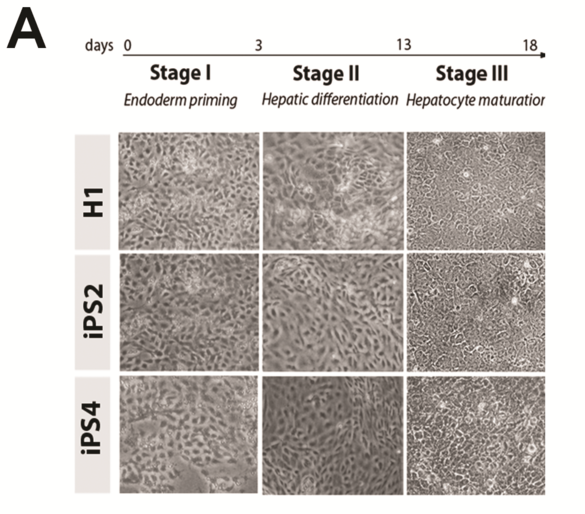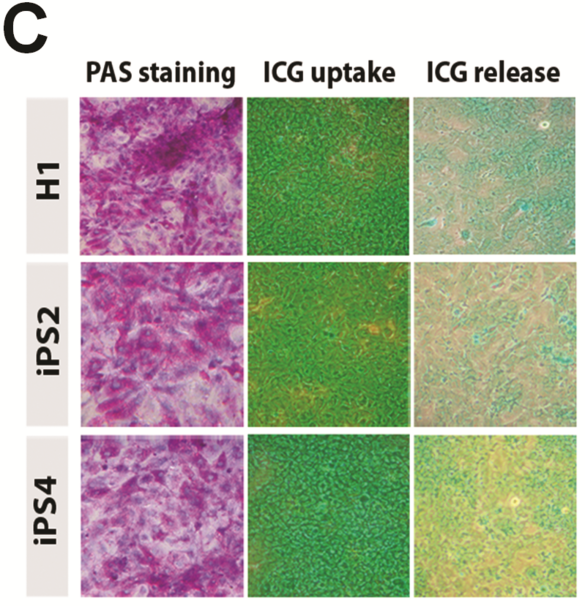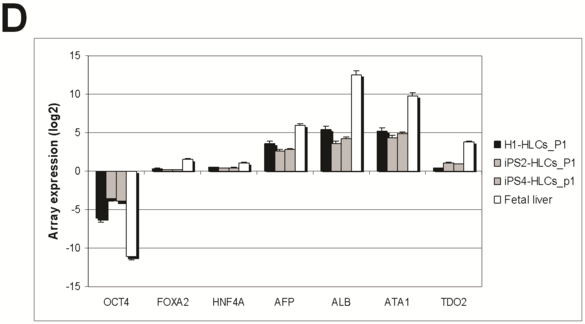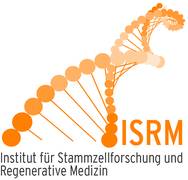Differentiation of ES/iPS cells in hepatocyte-like cells
We have successfully generated and characterized iPS cells from human skin-derived fibroblast. Human embryonic stem cells and iPS cells are comparatively differentiated into hepatocyte-like cells. The entire protocol for differentiating hESC/iPS into hepatocytes lasts 18 days and involves the induction of the definitive endoderm lineage, followed by hepatic initiation and then maturation (Figure 1).










Figure 1: Generation of hepatocyte-like cells (HLCs) from iPSCs. HLCs were generated from hESC H1 line and from iPSC iPS2 and iPS4 lines using a three-step protocol previously demonstrated in hESCs.
(A) Upper panel, general outline of the three-step procedure is depicted. Lower panel, pictures showing the cellular morphology at the end of each stage. (B) Immunofluorescence staining for the endoderm marker SOX17 and the hepatocyte markers alpha-fetoprotein (AFP) and albumin (ALB) in mature HCLs derived from H1, iPS2 and iPS4. Scale bar = 10µm. (C) Functional assays in HLCs. Glycogen deposits were visualized using the Periodic Acid Schiff (PAS) staining kit. The ability to uptake and release substances was monitored using 1mg/ml of the Indocyanine Green (ICG) dye. The uptake was determined after 2h of incubation, while the release was detected 18h later. Analysis of hepatocyte marker expression by Illumina array (D) and RT-PCR (E) in HLCs derived from H1 (H1-HLCs_P1) and HLCs derived from iPS2 and iPS4 (iPS2-HLCs_P1 and iPS4-HLCs_P1).
Reference:
Comparative Analysis of Human Embryonic Stem Cell and Induced Pluripotent Stem Cell-Derived Hepatocyte-Like Cells Reveals Current Drawbacks and Possible Strategies for Improved Differentiation.
Jozefczuk J, Prigione A, Chavez L, Adjaye J.
Stem Cells Dev. 2011 Jan 24. PMID: 21162674 PubMed




